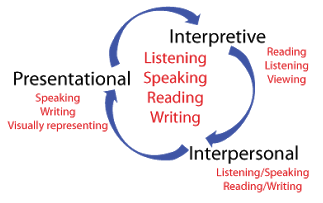Laura Tolly Estill’s Updates
Increasing Accessibility with Learning Styles and Multimodal Literacies
As we learned from Dr. Cope in Affordance 3, multimodal literacy means expressing knowledge using multiple modes. Likewise, multimodal learning is acquiring knowledge through a variety of different modes.
Modes are channels of information, or anything that communicates or expresses meaning in some way, including:
Pictures
Illustrations
Audio
Speech
Writing and print
Music
Movement
Gestures
Facial expressions
Colors
(Kennedy, 2019)
An online educational learning module might include speech, images, music, and text, which can enhance a student’s learning experience. Students can communicate new knowledge using various modes in presentations, interpersonally, and interpretively at their appropriate level of proficiency.
According to Ralph (2020) it is important to provide material in a variety of formats to increase course accessibility and improve engagement. Using video, audio, reading, and interactive content may also help students who struggle academically with one particular mode. Online modules can provide accommodations for exceptional learners such as text to speech, language translations, and lighting/font adjustments.
Individuals experience modes in different ways by each of the senses (visual, auditory, or tactile). A Learning Styles Inventory can help individuals identify which of the senses they are most attuned, thereby influencing how they learn. However, it is important for teachers to create lessons that appeal to the multiple learning styles of students as most students learn best through a blending of multiple modes. Driver (2020) suggests that online students become frustrated when they are enrolled in online courses that are primarily made with text and images. This type of class may work for verbal learners, but does not address the learning styles of other students. When designing an online course, it is best to use a combination of all the modalities of learning and incorporate all of the learning styles (visual, auditory, reading/writing, kinesthetic) in a balanced way (Omer, 2016). The following image provides several learner-centered strategies that course instructors can use to engage students based on different learning styles, using various modalities. Strategies can be adjusted to fit online learning environments.
The following video showcases how podcasts accommodate different learning styles.
References
Driver, H. (2019). Developing Online Courses for All Learning Styles. Retrieved from https://elearningindustry.com/developing-online-courses-for-different-learning-styles
Kennedy, L (2019). 35 Multimodal Learning Strategies and Examples. Retrieved from https://www.prodigygame.com/blog/multimodal-learning/#definition
Omar, A. H. (2016). Instructional Design and Learning Styles. Retrieved from https://elearningindustry.com/instructional-design-and-learning-styles
Ralph, M. (2020). Teaching Strategies of Award-Winning Online Instructors. Retrieved from https://www.edutopia.org/article/teaching-strategies-award-winning-online-instructors
Region X ESC. Modes of Communication. Retrieved from https://www.region10.org/programs/languages-other-than-english-lote/resources/modes-of-communication/
Teach Thought (2020). 28 Student-Centered Instructional Strategies. Retrieved from http://www.teachthought.com/pedagogy/28-student-centered-instructional-strategies/




Hi Laura
I trust you are well. Apologies for not responding to this good post much earlier. I find your line of argument compelling on how 'students tend to struggle academically with one particular mode,' then making a case for multimodal learning. Do you think perhaps we are to require educators to include say about 50% editable text as well as 50% multimedia learning assets in an online course?